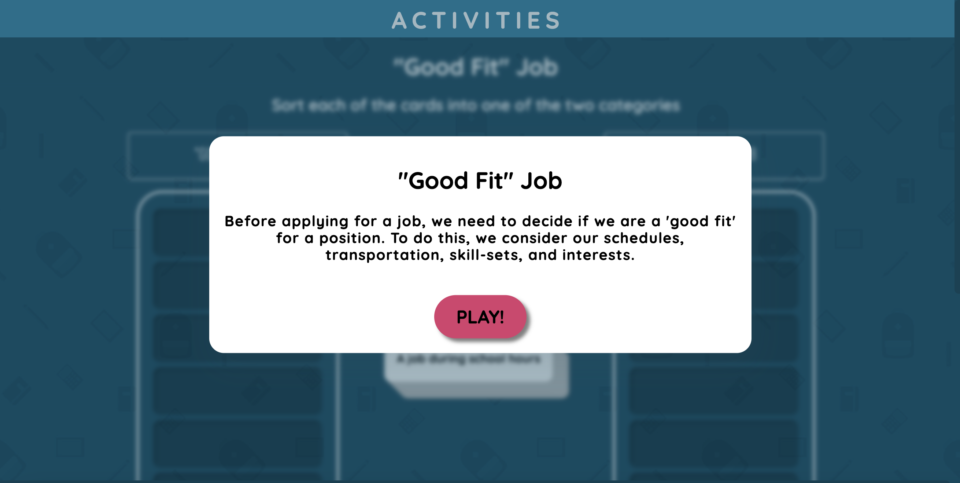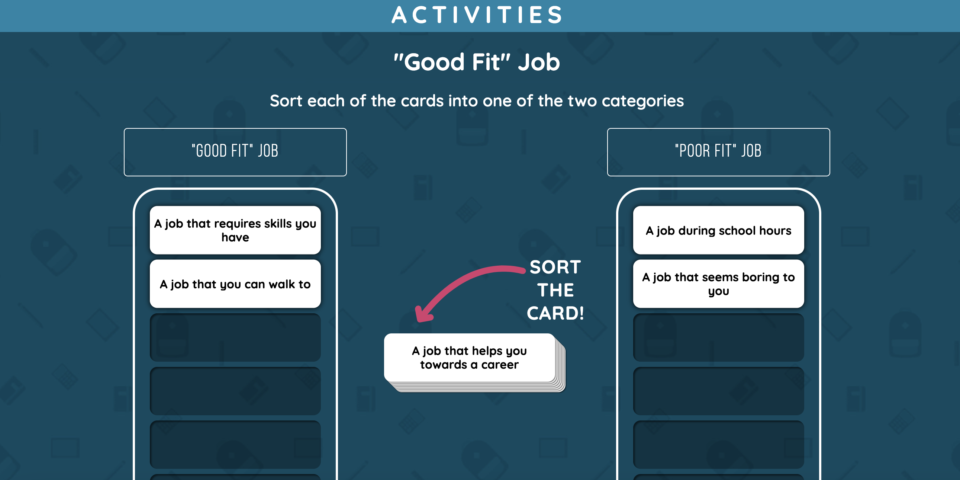
Preparing special education students for the workforce involves not only teaching job-specific skills but also helping them understand which types of jobs best suit their abilities and preferences. In particular, special education teachers in transition settings play a crucial role in this preparation. These teachers are frequently on the lookout for effective job training resources for special education students. One innovative tool that can significantly enhance this process is the interactive digital worksheet titled “Good Fit” Job Sorting Activity. This blog post will delve into how this activity can be seamlessly integrated into transition programs, effectively supporting special education students in identifying suitable employment opportunities.
The Importance of Job Training in Special Education
Job training for special education students extends far beyond being merely a component of the curriculum; indeed, it serves as a critical element in ensuring these young adults are well-prepared for life after school. Effective job training not only aids students in understanding their own strengths and challenges but also helps them acquire practical skills and navigate the often complex expectations of the workplace. For students in transition settings—those transitioning from the structured environment of school to the more dynamic and unpredictable world of work—this training becomes particularly vital.
Job Training Resources for Special Education Students: Introducing the “Good Fit” Job Sorting Activity
To support special education students in identifying employment opportunities that align with their unique profiles, the “Good Fit” Job Sorting Activity proves invaluable. This interactive digital worksheet is strategically designed to prompt students to engage in a thorough analysis of various job characteristics, sorting them into “Good Fit” or “Poor Fit” categories based on their personal needs and preferences. Through this activity, students are encouraged to thoughtfully consider each aspect of potential job roles, enhancing their ability to make informed decisions about their future careers.

How the Activity Works
- Interactive Interface: The worksheet presents a list of job characteristics.
- Sorting Mechanism: Students drag and drop each characteristic into the appropriate column, fostering engagement and making the activity visually oriented.
- Personal Reflection: As students sort the characteristics, they are prompted to reflect on their personal preferences. This helps them connect the activity to real-world implications.

Benefits of Using the “Good Fit” Job Sorting Activity
Enhanced Self-Awareness
One of the primary benefits of this activity is the significant increase in self-awareness among students. Through the process of evaluating various job characteristics, students can gain deeper insights into which work environments are most suitable for them. Additionally, they have the opportunity to explore and assess which tasks they might find the most fulfilling.
Real-World Application
The sorting activity is meticulously designed to replicate the types of decisions students will need to make during their job searches and career planning. This real-world applicability enhances the learning experience, making it not only more relevant but also immediately useful.
Customizable and Adaptable
Thanks to the digital nature of the worksheet, it allows for extensive customization to meet diverse student needs and preferences. Indeed, this worksheet stands out as a truly versatile tool in any special education teacher’s toolkit, adapting seamlessly to various educational contexts.
Implementing the “Good Fit” Job Sorting Activity in Transition Programs
Integration into Classroom Lessons
Incorporate the activity into regular classroom sessions focused on career readiness and personal development. It can be a standalone exercise or part of a larger unit on job preparation.
Collaborative Learning
Encourage students to work in pairs or small groups to discuss their choices. This collaboration can lead to deeper insights and peer learning, as students explain their reasoning and hear different perspectives.
Ongoing Career Exploration
Use the activity as a starting point for a broader exploration of potential careers. Following the sorting exercise, students could research specific jobs that align with their “Good Fit” characteristics. Or, they could even meet with professionals in those roles!
Teacher and Counselor Involvement
Special education teachers and transition counselors should actively participate in the activity. Support students by guiding discussions and providing input based on their knowledge of each student’s capabilities and goals.
Unlock ALL of our job training resources by signing up for your free trial today – no credit card required!
Access the full Social Communication Curriculum HERE!
Instant access to thousands of no-prep social skills activities, over 1000+ video lessons, and engaging games designed to enhance learning and development.
Conclusion
The “Good Fit” Job Sorting Activity is more than just a classroom tool; indeed, it significantly empowers special education students to make informed decisions. By helping students identify the job characteristics that best suit their needs, this activity effectively supports their pursuit of fulfilling careers. Moreover, when special education teachers in transition settings integrate such job training resources, they dramatically enhance the effectiveness of their programs. This ensures that students are not only prepared for the workforce but also genuinely excited about their future prospects.
Sample Video
Students learn best from watching real students their own age model skills. Try out this sample video lesson. We offer our entire Social-Emotional Learning platform free for 14 days here!
Related Blog Posts:
Try the no-prep way to teach Self-Regulation
Navigating Emotional Regulation: SEL Techniques for Students in Need
Teaching Emotional Regulation: Practical Lesson Plans for Social Success

